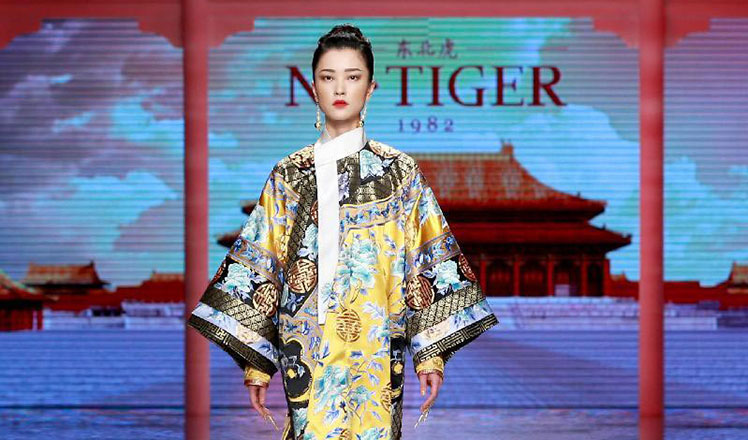Art fete showcases close bonds with Mongolia
Updated: 2015-10-27 07:38
By Lin Qi(China Daily)
|
||||||||
 |
|
The ongoing exhibition Long Songs on the Grassland in Beijing's Taimiao features works by more than 40 artists from China and Mongolia. [Photo provided to China Daily] |
He took a realistic approach at the time, skipping a common, superficial tendency to just portray beautiful scenery.
The established Beijing-based artist, who grew up in the Inner Mongolian autonomous region, injected a strong sense of loneliness and calmness into the sky, horses and herdsmen in his works.
He presented a highly personalized treatment of lighting and shading effect.
He showed the strengths and weaknesses of an ancient tribe that struggles with the complexities of modern life.
His signature works of the period, such as Woman Herding Cattle and Wall, are among around 200 paintings, sculptures, installations and other art forms displayed at a Beijing exhibition titled Long Songs on the Grassland.
The event includes more than 40 artists from China and Mongolia. Their works mark and deepen the cultural dialogue between the two countries. China and Mongolia share a border of about 4,700 kilometers.
For a large number of Chinese viewers who are more familiar with traditional Mongolian art, the exhibition offers a glimpse of diverse aspects of contemporary Mongolian art.
People get a clear and full picture of what's happening in Mongolian art, says Fan Di'an, head of Beijing's Central Academy of Fine Arts, which has organized the exhibition with the Mongolian National Modern Art Gallery in Ulan Bator.
He says that the works show a transition from the dominating realism before the 1980s to attempts to be unique.
"Like their contemporaries in China, artists of the younger generation are also playing with experimental, conceptual themes and approaches," Fan says. "Together, their creativity shows a multi-oriented development of art against the background of globalization."
The exhibition was launched as the first show of a "Meet Along the Silk Road" exhibition series, by the Co-innovation Center for Art Creation and Research on the Silk Road. The institution was established by the Central Academy of Fine Arts in June to promote artistic exchanges among related civilizations along the Silk Road.
Fan, who also directs the center, says that it hopes to organize more exhibitions with one or two countries along the Silk Road every year. He says such artistic exchanges further boost interpersonal communication, which is more important.
The exhibition is being held at the four halls of Taimiao, the Imperial Ancestral Temple, also known as the Working People's Cultural Palace, right beside the Palace Museum.
Taimiao represents the peak of China's imperial ritual culture and is where emperors of the Ming (1368-1644) and Qing (1644-1911) dynasties held sacrificial ceremonies to respect their ancestors.
The exhibition, which began in September, shows dozens of oil portraits of 20th century China from the Central Academy of Fine Arts museum collection.
If you go
6 am-9 pm, through Nov 3. Taimiao, east of Tian'anmen Square, Beijing. 010-6525-2189.
Related:
Auction to put focus on growth of Chinese oil painting
'Photo Beijing 2015' int'l photography week kicks off in Beijing

 Sister cities mingle in Chicago
Sister cities mingle in Chicago
 Girl with a sand painting dream
Girl with a sand painting dream
 Decorating benefactors make a dorm a cozy home
Decorating benefactors make a dorm a cozy home
 The world in photos: Oct 19 - 25
The world in photos: Oct 19 - 25
 Hamilton takes third F1 title after US thriller
Hamilton takes third F1 title after US thriller
 Qipaos sizzle on the runway as China Fashion Week kicks off
Qipaos sizzle on the runway as China Fashion Week kicks off
 President Xi visits Man City football club
President Xi visits Man City football club
 British PM Cameron treats President Xi to beer, fish and chips in English pub
British PM Cameron treats President Xi to beer, fish and chips in English pub
Most Viewed
Editor's Picks

|

|

|

|

|

|
Today's Top News
Tu first Chinese to win Nobel Prize in Medicine
Huntsman says Sino-US relationship needs common goals
Xi pledges $2 billion to help developing countries
Young people from US look forward to Xi's state visit: Survey
US to accept more refugees than planned
Li calls on State-owned firms to tap more global markets
Apple's iOS App Store suffers first major attack
Japan enacts new security laws to overturn postwar pacifism
US Weekly

|

|







